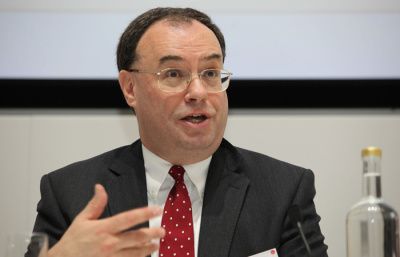2005, Scranton, Pennsylvania. Dunder Mifflin, the fictional company from the TV show The Office, is set in a dilapidated building where a group of employees in beige suits flogs paper in an increasingly digital world. .
Fast forward 20 years and 110 million sq ft of office space is vacant across the UK. Meanwhile, call center employees take calls in their spare rooms at home while marching on treadmills under their desks.
64% of employees surveyed by Forbes in September are working from home in some capacity.
Will the commercial lending market help or hinder?
Naturally, therefore, many companies expect to reduce their footprint once their leases expire. After all, real estate is a company's second-largest expense after payroll.
Office is the only sector in the market showing negative year-on-year returns. So is the asset class headed for extinction? Or will the sector adapt and overcome the drop in demand, as Dunder Mifflin pivoted to printer production? And more importantly, will the commercial lending market help? Will it hinder it?
UK footprint has fallen by 23% since 2019, with the full impact still yet to be felt at the end of the lease expiration cycle. Although this paints a bleak picture, central London is experiencing a positive recovery in demand and, in my view, we will follow where the City of London is leading.
Commercial bank managers still cling to paper applications in the AI era
Smart business owners buy and occupy office space or rent it out. This allows for cash flow and affordability while also being good for future growth plans. But big lenders don't take additional rental income into account when calculating affordability, which stifles ingenuity and discourages investment.
Quality that beats everything
To attract employees back, companies are focusing on the best office space. “New” initiatives such as co-working spaces and shower facilities are giving way to a demand for more modern amenities and wellness attributes. Therefore, although square footage is decreasing, rents for blue-chip stocks are increasing.
The gap between prime and Grade B properties is widening, with increasing repurposing of aging stock into housing and other asset classes. This is somewhat positive given the housing shortage, but what does this mean for the commercial market if the return to offices is greater than expected?
Lenders need to create an environment that makes it easy for small and medium-sized enterprises to grow.
Flexibility in lease terms is required as occupiers seek the freedom to scale up or down. This leaves commercial investors caught in the middle. Nimble small businesses don't want to take the risk of signing long-term leases, while lenders are finding it harder to fill vacancies as they don't consider loans with tenants on short-term licenses.
The disconnect between market demand and lending standards will discourage investment in this area and further exacerbate the vacancy problem.
Evolving legislation has made energy efficiency in office buildings an important issue. EPC products now offer meaningful incentives for investing in efficiency improvements, including discounts of up to 0.8% on commercial properties rated A-C.
Smart business owners buy office space to both occupy and rent.
Despite some positive developments, financial institutions need to create a conducive environment for small and medium-sized businesses to grow, and three key areas are missing.
First, excessive dynamic pricing by commercial lenders deprives customers of all transparency and certainty. With affordable prices and restrictive stress testing, deals are often driven by paper-thin margins, so presenting a client with options that differ far enough to lock them in isn't the way to do business.
Second, Bounce Back Loans and the Coronavirus Business Interruption Loan Facility were used by businesses in good faith to survive the global pandemic without knowing that future borrowing would become more difficult. Lenders stress test these loans at 200% even though the repayment terms are fixed. This prevents companies from recovering capital and growing.
Third, bottlenecks in the evaluation stage hinder the entire process. Since most of the valuation information is market-based, there is no reason to take 21 days to appraise a property. Surveyors need to innovate.
Central London is seeing a positive recovery in demand and in my view these are the areas where the City of London is leading the way.
After four tough years, there is a whistle of positivity in the air. Interest rates are trending lower, lender appetite is returning and customers are escaping the inertia that has plagued business investing. As the pro-construction government pushes ahead with planning reforms, now is the time to champion small and medium-sized businesses, the backbone of the economy.
The office landscape has adapted well to the new normal, but long-term success requires investment and innovation. Two decades after Dunder Mifflin shelved its paper operations, commercial bankers in the age of AI are still clinging to paper applications.
It's time to rise to the occasion.
Peter Williams is CEO of Propp.io
This article was published in the November 2024 issue of Mortgage Strategy.
If you would like to subscribe to our monthly print or digital magazine, please click here.






















